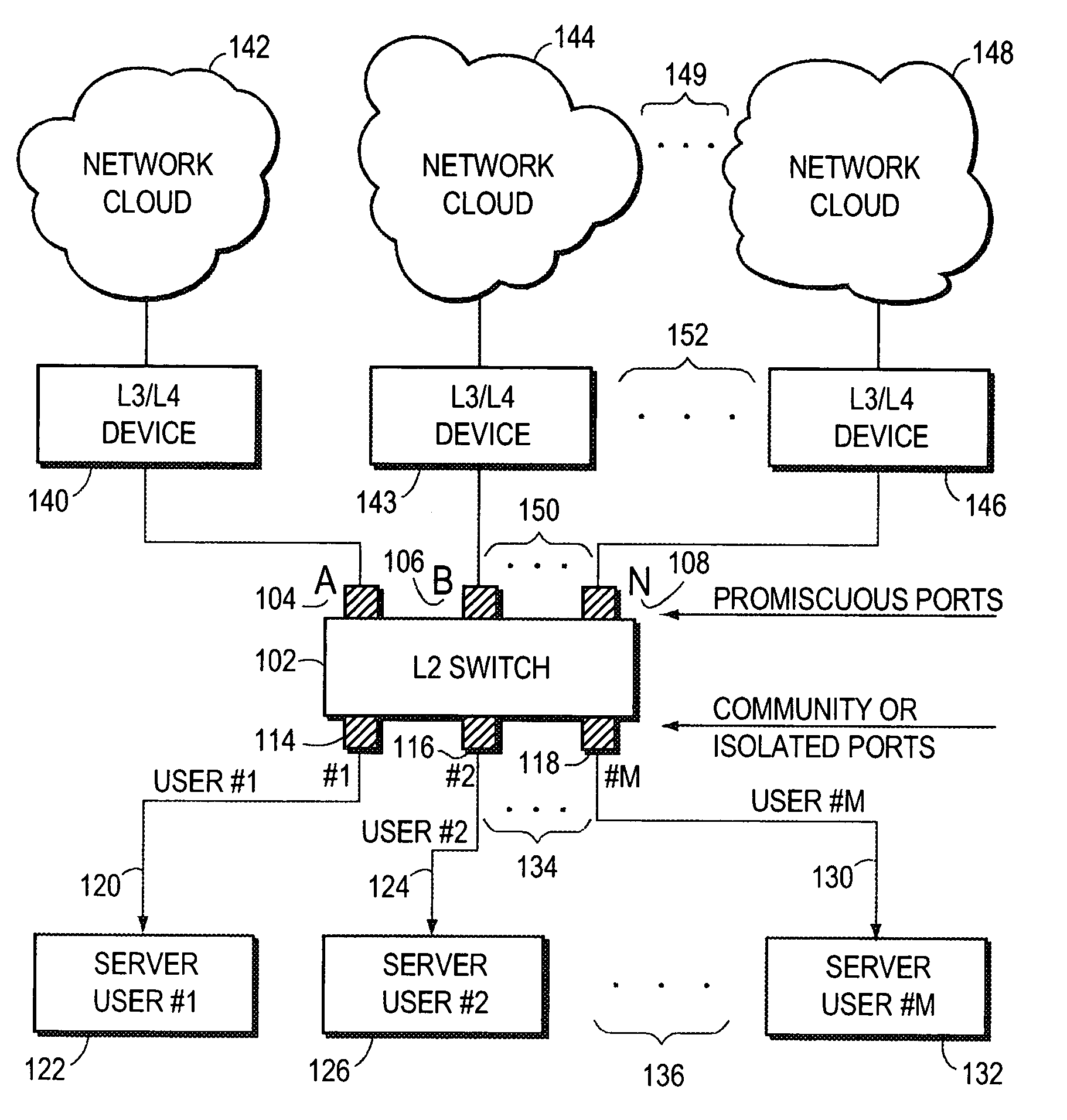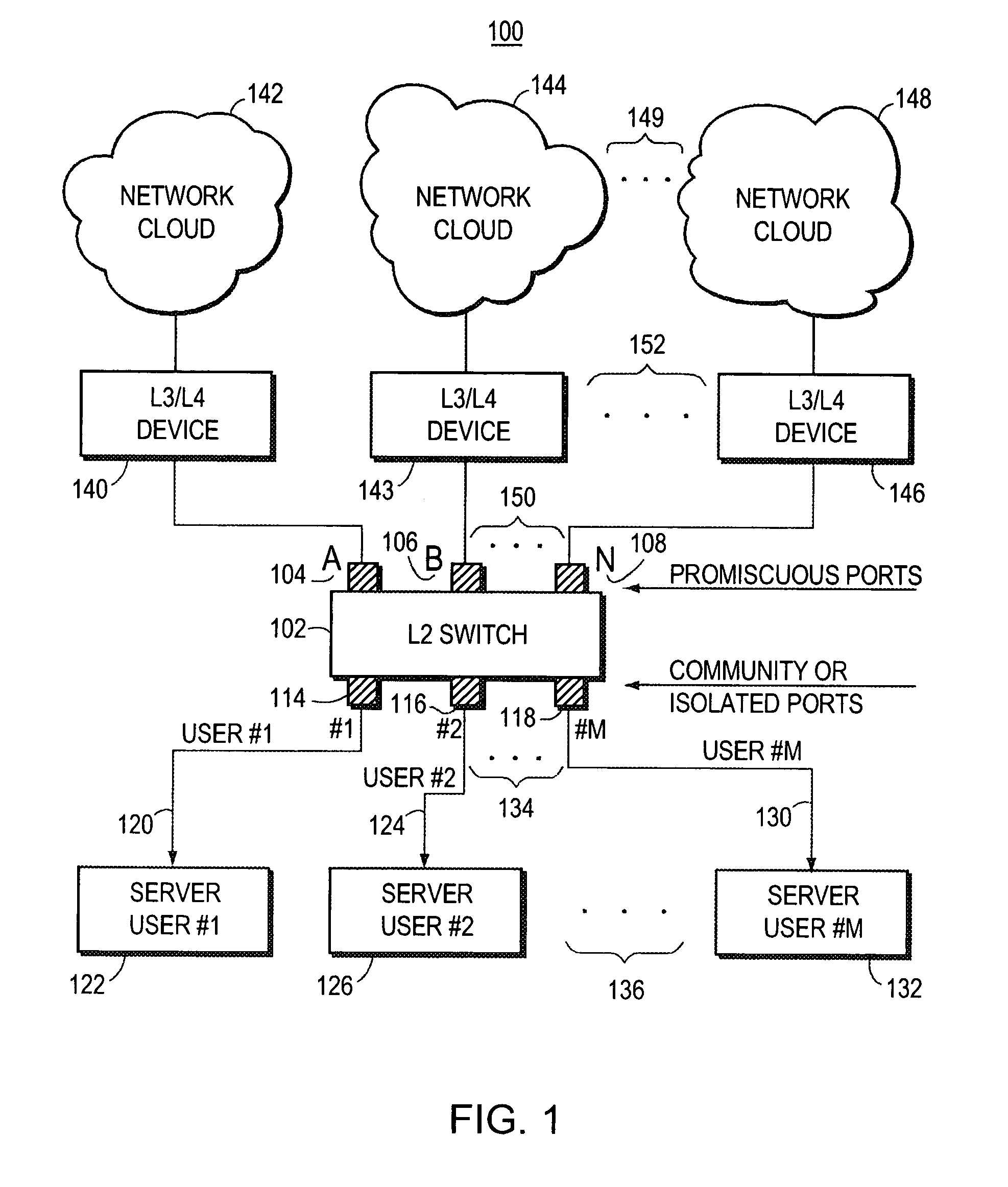Private VLANs
a virtual local area network and private technology, applied in the field of virtual local area networks, can solve the problems that the isolated or community port cannot receive traffic from the external lan connected, and achieve the effect of increasing the number of ports
- Summary
- Abstract
- Description
- Claims
- Application Information
AI Technical Summary
Benefits of technology
Problems solved by technology
Method used
Image
Examples
Embodiment Construction
[0031]Turning now to FIG. 1, computer network 100 is shown.
[0032]L2 switch 102 has promiscuous ports, port A 104, port B 106, port N 108, etc. Promiscuous port 108 is indicated as “N”, indicating that an arbitrary number of promiscuous ports may be employed by L2 switch 102.
[0033]L2 switch 102 also has isolated or community ports, port #1114 is connected to user #1 VLAN 120, and user #1 VLAN 120 connects to user #1 server 122. Isolated or community port #2116 connects to user #2 VLAN 124, and user #2 VLAN 124 connects to user #2 server 126. Isolated or community port #M 118 is labeled “M” to indicate that L2 switch 102 may have an arbitrary number of isolated or community ports. Isolated or community port #M 118 connects to user #M VLAN 130, and user #M VLAN 130 connects to user #M server 132. “Three dots”134 indicate that L2 switch 102 may have a plurality of isolated or community ports, etc. “Three dots”136 indicate that a plurality of user servers, each connected to a different i...
PUM
 Login to View More
Login to View More Abstract
Description
Claims
Application Information
 Login to View More
Login to View More - R&D
- Intellectual Property
- Life Sciences
- Materials
- Tech Scout
- Unparalleled Data Quality
- Higher Quality Content
- 60% Fewer Hallucinations
Browse by: Latest US Patents, China's latest patents, Technical Efficacy Thesaurus, Application Domain, Technology Topic, Popular Technical Reports.
© 2025 PatSnap. All rights reserved.Legal|Privacy policy|Modern Slavery Act Transparency Statement|Sitemap|About US| Contact US: help@patsnap.com



